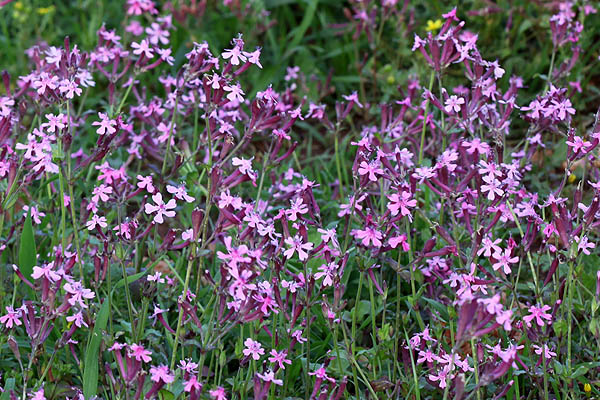Hebrew: ציפורנית מצרית, Arabic: السيلينة المصرية
| Scientific name: | Silene aegyptiaca (L.) L. f. | |
| Common name: | Egyptian Campion | |
| Hebrew name: | ציפורנית מצרית | |
| Arabic name: | السيلينة المصرية | |
| Plant Family: | Caryophyllaceae, ציפורניים |

|
| Life form: | Therophyte, annual | |
| Stems: | 15-20cm in height | |
| Leaves: | Opposite, entire | |
| Flowers: | Hermaphroditic; 5 petals, each petal has two tooth-like projections at the top, and a notch in the base; lilach, pink | |
| Fruits / pods: | Capsule containing many seeds. | |
| Flowering Period: | January, February, March, April | |
| Habitat: | Batha, Phrygana,disturbed habitats | |
| Distribution: | Mediterranean Woodlands and Shrublands, Semi-steppe shrublands, Shrub-steppes, Montane vegetation of Mt. Hermon | |
| Chorotype: | Mediterranean | |
| Summer shedding: | Ephemeral |

Derivation of the botanical name: Silene, probably from Greek sialon, "saliva," referring to gummy exudation on stems, and/or named for Silenus, intoxicated foster-father of Bacchus (god of wine) who was covered with foam, much like the glandular secretions of many species of this genus. aegyptiaca, Egyptian. The Hebrew name: צפרנית, tsipornit, from ציפורן, tsiporen (Dianthus).


Location: Hararit, Lavra Netofa (Lower Galilee, Misgav), הררית, מבדד נטופה |